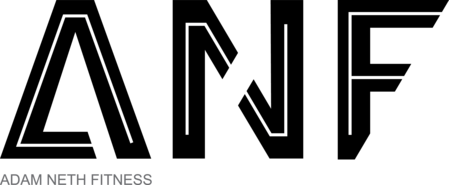Targeting the Three Divisions of the Chest

When looking at the pectoralis major muscles (also referred to as the chest muscles), we can see that they are a giant fan shaped muscle group that inserts at the humerus. The humerus is the upper arm bone, as pictured in the anatomical sketch below. We can clearly see the different directions of the muscle fibers, since some originate on the clavicle, sternum, and even some on the cartilage of ribs 1-6. We can break the pectoralis major into three different divisions.

Since there are three separate divisions of the pectoralis major, that means we can bias these divisions with exercise selection, proper intent, and proper set up. What exactly does that mean? It means we can be more selective with the tissue being worked and ensure that all divisions of the pectoralis major (pecs) are stimulated, rather than just one or two of the divisions.
Let's start by looking at some examples of common chest exercises for each division. The photos below have greens arrows indicating the direction of force which lines up with the direction of fibers for that division being targeted. There's a red line which indicates the angle of the sternum.

Incline Barbell Press (Sternal Pec Bias)

Dip (Costal Pec Bias)

High Incline Press (Clavicular Pec Bias)
When using free weights, an easy cue to remember is: whatever muscle is directly “on top” of the resistance is what muscle will be biased. If you imagine someone on a High Incline Bench as shown above, you can see that the chest muscle that is “on top” would be the clavicular division. The incline of the bench is going to be based on the individual's structure. Take a look at the exercise above, the dip. If we imagine what muscles are directly "on top” in relation to gravity or free weights, it would be the costal division.
Take a look at the video below featuring the Flat Dumbbell Flat Bench Press for cues on the Execution Series.
When we look at cables and training the pectoralis major, we need to consider that the resistance is no longer straight down. When using cables, the resistance is provided by set up of the cable arms. Depending on where you set up the cables is going to determine which division of the pecs you will bias. Below, you will see a video of me performing the Costal Pec Fly using cables. You'll see that the cables are set up high to ensure that the resistance is pulling right in line with the costal division. If we think about this, we can come up with some generalized ideas for training the chest in fly variations using cables. If we want to target the sternal division, the cables will be set around chest/shoulder height, pulling the arm across the chest. If we want to target the clavicular division, the cables will be set below the shoulders, with the intent of the arm being across the chest with an upward intent. Just imagine similar lines of resistance as shown in the photos above and mimic positioning with cables.
Another thing to consider is where the resistance is overloading the movement. Free weight chest exercises are going to be more challenging to the "lengthened" position of the muscle, where cable exercises are going to generally be more challenging to the "shortened" position of the muscle. We can elaborate further on this another time, but it's just another consideration to be made before slapping random exercises together.
It’s important to know how to bias these divisions because without knowledge of this, exercises could be programmed or executed in a redundant manner. Without getting too far into the muscle lengths in this post, by understanding how to train your sternal fibers versus your clavicular fibers, you are able to get more effective volume on the targeted tissues as well as not “overlapping” movements.
I hope this post can help you understand how to target certain divisions of the chest. When it comes to programming, knowing how to bias and target these different divisions opens up many opportunities, as well as correcting some programming/execution issues mentioned above.
Thanks for reading!
Coach Adam Neth
Instagram
Facebook
Website
Youtube
